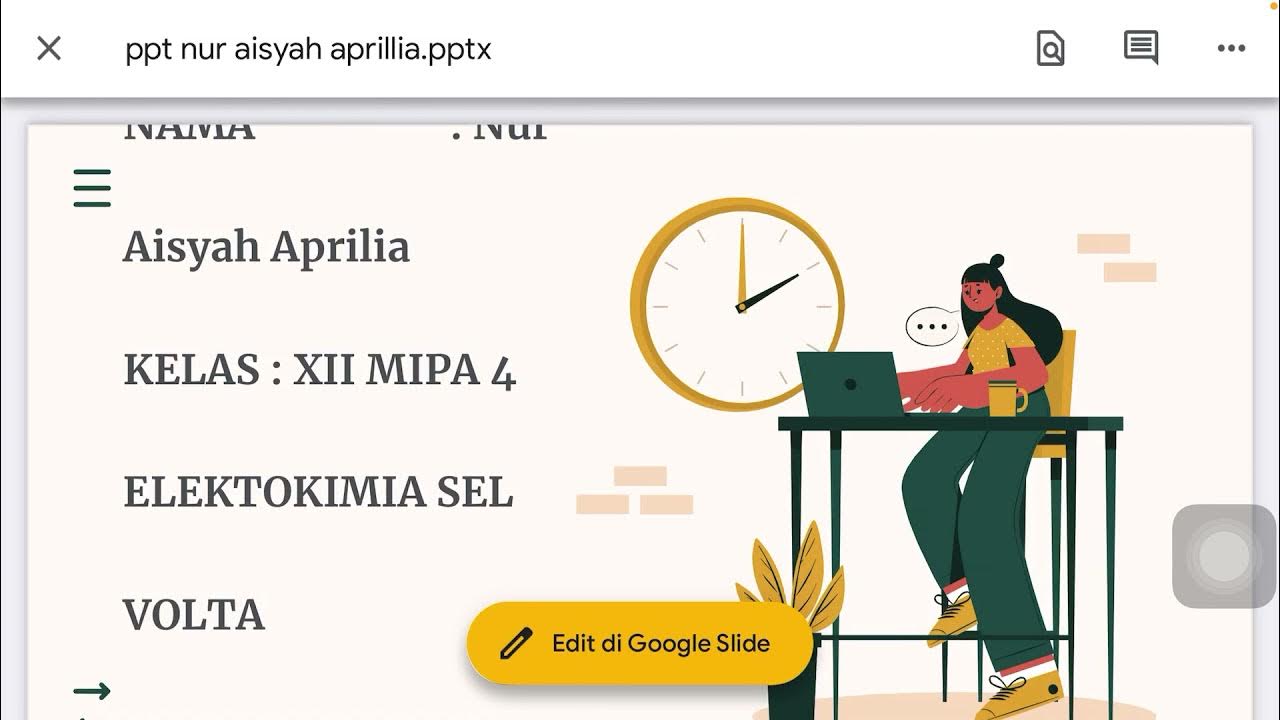SEL VOLTA
Summary
TLDRIn this informative video, Udin introduces viewers to voltaic cells, explaining their function as electrochemical cells that convert chemical energy into electrical energy through redox reactions. He outlines the roles of the two electrodes—anode and cathode—and explains how to determine their functions based on standard reduction potentials. The video includes an engaging example problem, illustrating the process of identifying the anode and cathode, calculating cell voltage, and writing overall reactions. Udin emphasizes practical tips and mnemonics to aid understanding, making the topic accessible and enjoyable for students learning chemistry.
Takeaways
- 😀 A voltaic cell is an electrochemical cell that converts chemical energy into electrical energy through redox reactions.
- 🔋 The cell consists of two electrodes: the anode, where oxidation occurs, and the cathode, where reduction occurs.
- ⚡ The potential difference (E°) of a voltaic cell can be calculated using the formula: E° = E_cathode - E_anode.
- 🔄 In a redox reaction, the substance with a higher standard electrode potential undergoes reduction.
- 📉 The substance with a lower standard electrode potential undergoes oxidation.
- 🧮 An example problem illustrated how to determine the anode, cathode, cell potential, and overall reaction for specific half-reactions.
- ✔️ The overall reaction is represented by combining the half-reactions while balancing electron flow.
- 📊 Cell notation is structured as: Anode | Anode ion || Cathode ion | Cathode.
- ✏️ A practice exercise was provided to reinforce understanding of determining E° and identifying components in a new example.
- 📣 The presenter encouraged viewers to share the video and engage with future content for more chemistry insights.
Q & A
What is a voltaic cell?
-A voltaic cell is an electrochemical cell that converts chemical energy into electrical energy through redox reactions.
What happens at the anode in a voltaic cell?
-At the anode, oxidation occurs, which means that electrons are released from the substance undergoing oxidation.
What is the role of the cathode in a voltaic cell?
-The cathode is where reduction occurs; it attracts electrons and is positively charged.
How do you calculate the cell potential (E°cell) of a voltaic cell?
-The cell potential is calculated using the formula: E°cell = E°cathode - E°anode.
In the example provided, which metal acts as the anode and which as the cathode?
-In the example, zinc (Zn) acts as the anode and copper (Cu) acts as the cathode.
What is the significance of a positive cell potential?
-A positive cell potential indicates that the reaction is spontaneous, meaning it can occur without external energy input.
What are the two types of electrodes mentioned in the script?
-The two types of electrodes are the anode and the cathode.
What is the relationship between oxidation and reduction at the electrodes?
-Oxidation occurs at the anode (loss of electrons), while reduction occurs at the cathode (gain of electrons).
How are ions involved in the reactions at the electrodes?
-Ions participate in the reactions by either gaining or losing electrons, facilitating the conversion of chemical energy to electrical energy.
What practical advice does the speaker give for understanding voltaic cells?
-The speaker encourages viewers to practice problems and utilize tricks to remember the concepts, ensuring they understand how to identify anodes and cathodes effectively.
Outlines

このセクションは有料ユーザー限定です。 アクセスするには、アップグレードをお願いします。
今すぐアップグレードMindmap

このセクションは有料ユーザー限定です。 アクセスするには、アップグレードをお願いします。
今すぐアップグレードKeywords

このセクションは有料ユーザー限定です。 アクセスするには、アップグレードをお願いします。
今すぐアップグレードHighlights

このセクションは有料ユーザー限定です。 アクセスするには、アップグレードをお願いします。
今すぐアップグレードTranscripts

このセクションは有料ユーザー限定です。 アクセスするには、アップグレードをお願いします。
今すぐアップグレード5.0 / 5 (0 votes)






